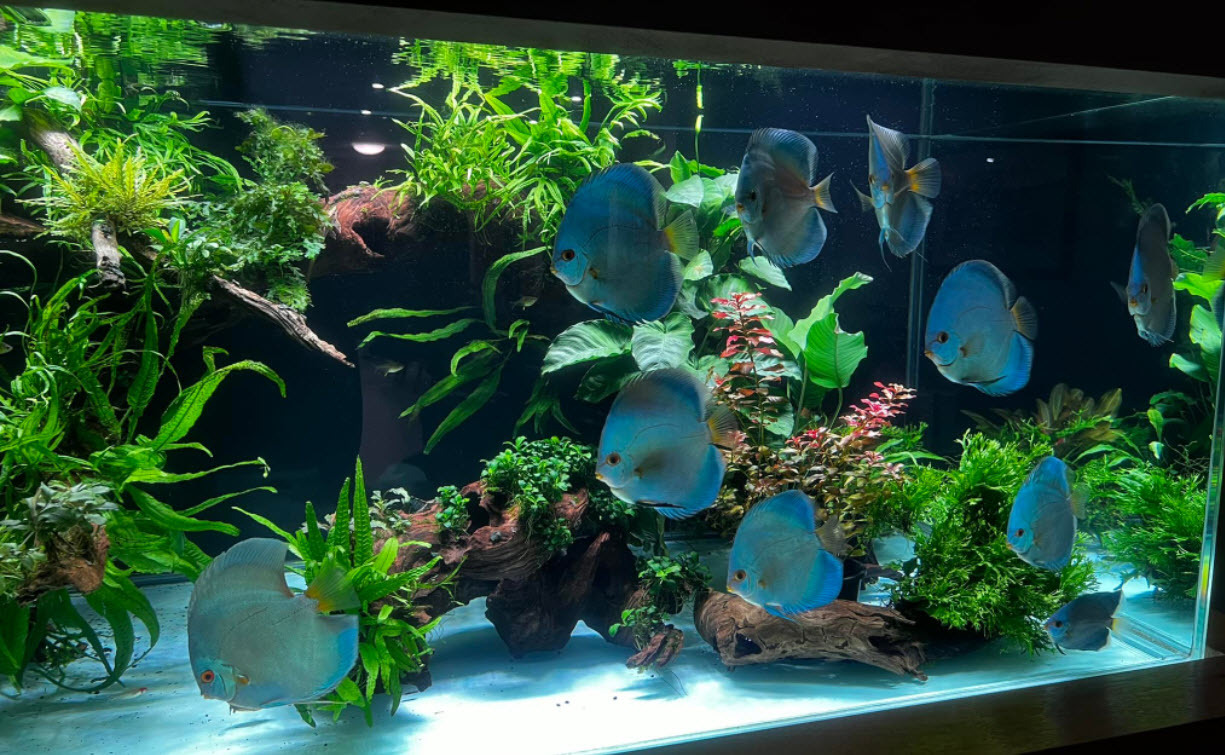In the realm of aquatic environments, plants for a discus tank hold a special significance, not only enhancing the aesthetic appeal but also contributing to the well-being of these captivating fish. Join us as we delve into the fascinating world of discus tank plants, exploring the key factors to consider when choosing the perfect species, their specific care requirements, and a showcase of popular options to transform your aquarium into a thriving underwater ecosystem.
From the lush Amazon Sword to the delicate Java Fern, each plant offers unique characteristics that cater to the specific needs of discus fish. Their ability to provide shelter, reduce stress, and improve water quality makes them indispensable companions in any discus tank.
Plant Care and Maintenance: Plants For A Discus Tank

Maintaining healthy plants in a discus tank requires specific care and maintenance practices. These practices include fertilization, pruning, propagation, algae control, and disease prevention. By adhering to these guidelines, hobbyists can ensure their plants thrive and contribute to the overall health and well-being of their discus.
Fertilization
Discus tank plants require regular fertilization to replenish essential nutrients depleted by growth and metabolic processes. Liquid fertilizers specifically designed for aquatic plants are ideal, as they are readily absorbed and can be tailored to the specific needs of the plants. Follow the manufacturer’s instructions for dosage and frequency, and avoid over-fertilizing, as this can lead to algae growth and other problems.
Pruning
Pruning is crucial for maintaining healthy plant growth and aesthetics. Regularly trim overgrown stems and leaves to encourage new growth and prevent overcrowding. Use sharp, clean scissors to make precise cuts, and remove any dead or decaying plant material. Pruning also helps control algae growth by reducing the amount of organic matter available for algae to feed on.
Propagation
Propagating discus tank plants is a cost-effective way to expand the plant population and maintain genetic diversity. Many aquatic plants can be propagated through various methods, including stem cuttings, division, and tissue culture. Research the specific propagation techniques for each plant species to ensure successful results.
Algae Control
Algae growth can be a nuisance in discus tanks, competing with plants for nutrients and potentially harming fish. To control algae, implement a comprehensive approach that includes regular water changes, appropriate lighting, and the use of algae-eating organisms such as snails or shrimp. Additionally, avoid overfeeding, as excess food can contribute to algae growth.
Disease Prevention, Plants for a discus tank
Preventing plant diseases is essential for maintaining a healthy discus tank ecosystem. Quarantine new plants before introducing them to the main tank to minimize the risk of introducing pathogens. Regularly inspect plants for signs of disease, such as discoloration, wilting, or stunted growth. If disease is detected, isolate the affected plant and treat it promptly with appropriate medications.
Common Plant Care Mistakes to Avoid
- Over-fertilizing: Can lead to algae growth and nutrient imbalances.
- Under-fertilizing: Can result in stunted growth and nutrient deficiencies.
- Overcrowding: Can restrict plant growth and promote algae growth.
- Insufficient lighting: Can inhibit photosynthesis and lead to weak, leggy plants.
- Improper water parameters: pH, hardness, and temperature should be within the optimal range for the specific plant species.
- Ignoring plant maintenance: Regular pruning, fertilization, and algae control are essential for plant health.



Discus tanks thrive with certain plants that provide shelter, oxygenation, and aesthetic appeal. Understanding the genetic makeup of these plants, as well as the animals they interact with, can help optimize their well-being. Plant and animal genome studies provide insights into the evolutionary relationships and physiological adaptations of these organisms.
By leveraging this knowledge, we can tailor plant selection for discus tanks to ensure optimal conditions and promote a thriving ecosystem.
When creating a natural habitat for discus, plants are an essential addition. Java fern, water sprite, and Amazon sword are popular choices, providing hiding spots and enhancing water quality. Similarly, plants can greatly benefit ball pythons, a species of snake that requires a humid environment.
Plants for ball pythons include pothos, snake plant, and umbrella plant, which provide cover and regulate humidity levels. Returning to discus tanks, live plants not only beautify the environment but also contribute to the overall well-being of these delicate fish.
One can enhance the ambiance of a discus tank by introducing plants. Beyond their aesthetic appeal, plants serve practical purposes too, providing shelter and improving water quality. Discus tanks often feature plants with large leaves, such as the Amazon sword or water sprite.
For those seeking similar foliage outdoors, consider big leaf plants outdoor . They can create a lush, tropical oasis in your garden, providing shade and a touch of the exotic. Returning to the discus tank, the addition of large-leafed plants not only enhances the visual appeal but also contributes to the well-being of the fish.